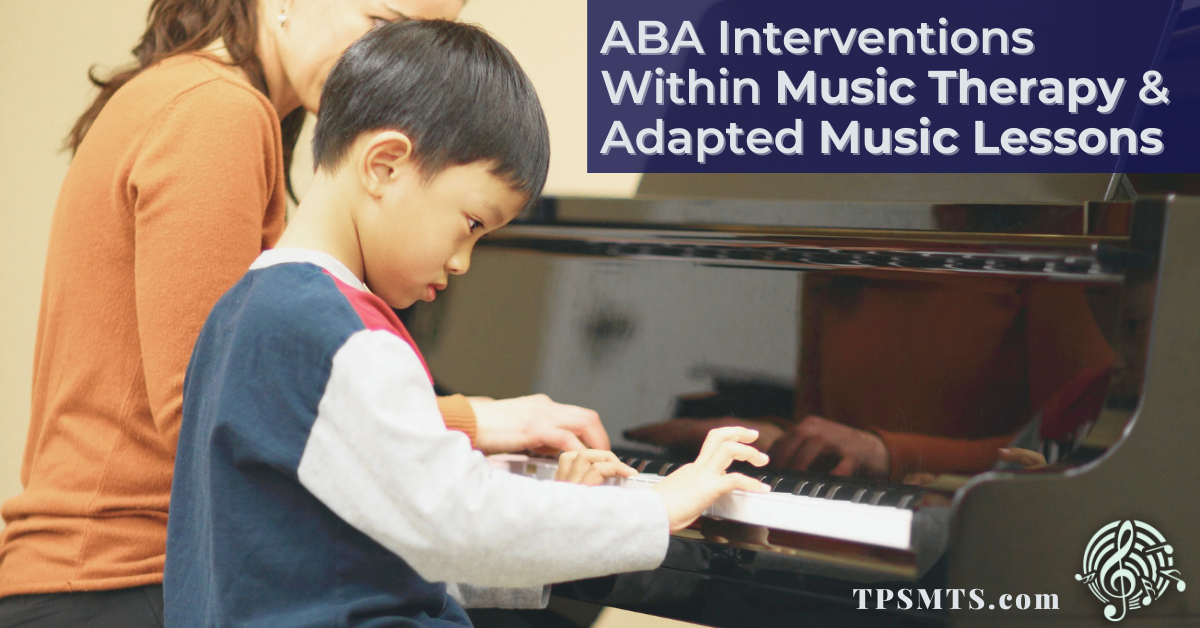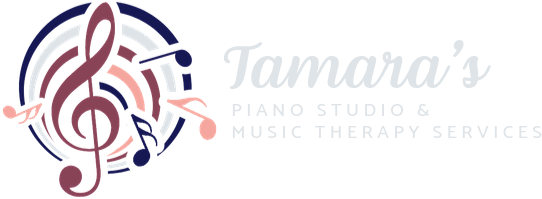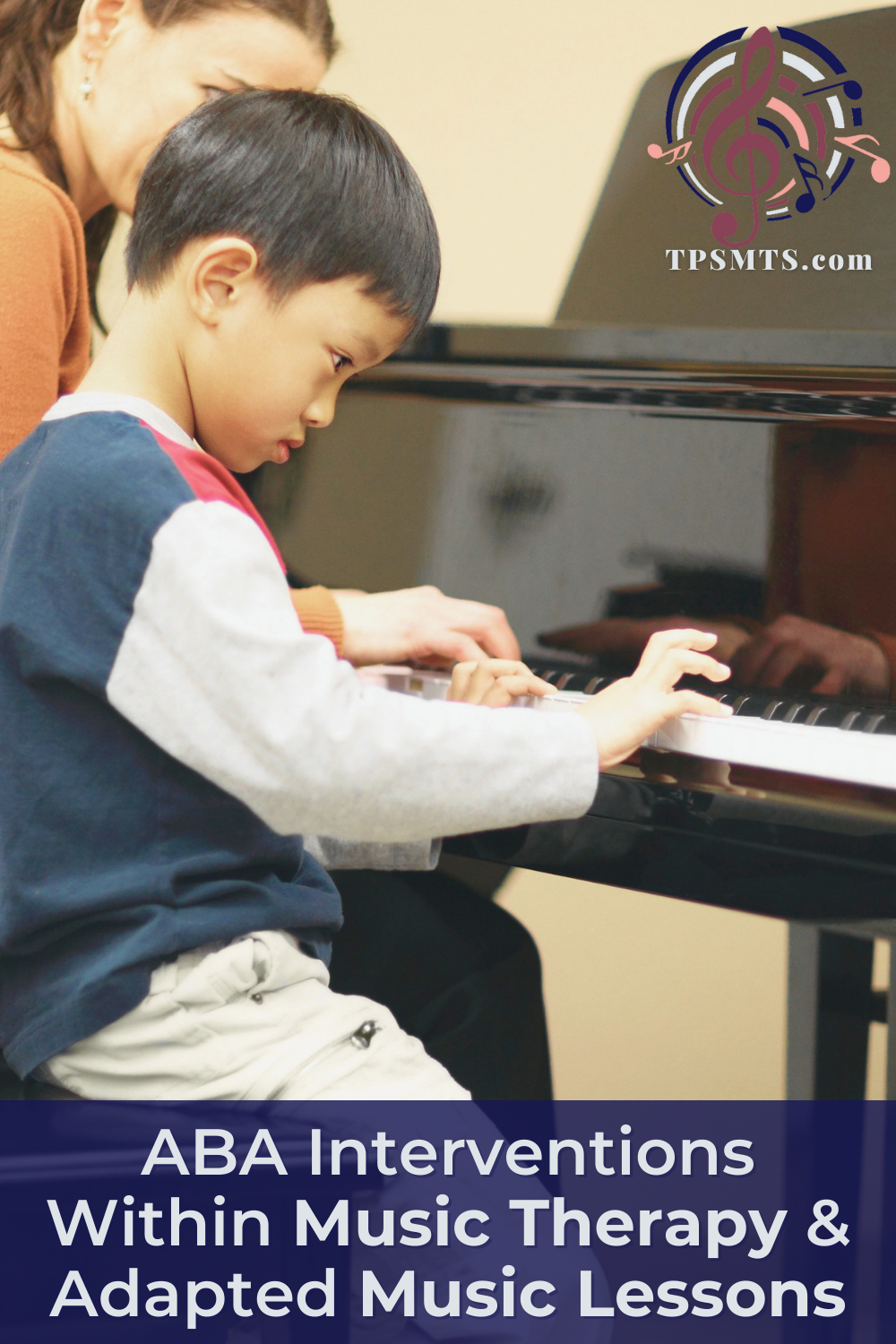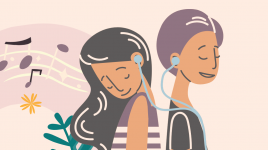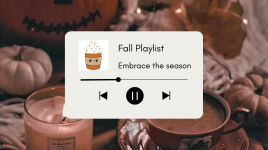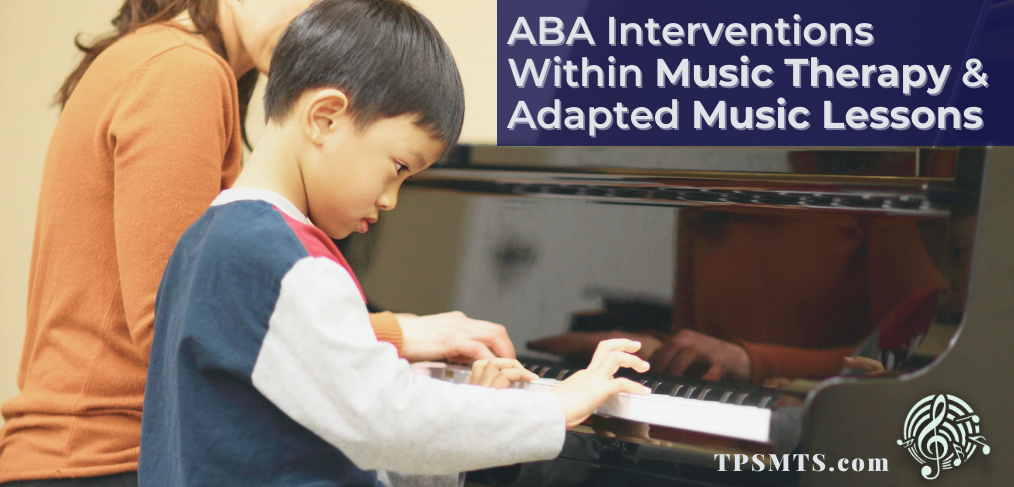
ABA Interventions Within Music Therapy and Adapted Music Lessons
How Applied Behaviour Analysis and Music Therapy/Lessons can work together
Students/clients often come to us with an Applied Behaviour Analysis (ABA) learning background, whether this be in a clinic or home setting, for respite, or within the school system. Though often associated with the learning for those with ASD (Autism Spectrum Disorder), the interventions within this approach can be adapted for students/clients of all ages and abilities, and can help achieve therapeutic and educational goals within music therapy sessions and adapted music lessons.
In adapting these familiar interventions, we strive to create an environment that mimics learning in different environments and provides a routine familiarity in a new setting.
Below are some ways in which ABA interventions can be incorporated into music therapy sessions and adapted music lessons:
STRUCTURE:
Similar to ABA therapy, having a routine sequence of events, along with the use of visual supports and choices, allow our students/clients to know what to expect in their lessons/sessions. By having a clear beginning, middle and end by using “Hello” and “Goodbye” songs, students/clients will understand when their lesson/session time has started and ended.
A visual (picture or written) schedule to determine what will be accomplished within a lesson/session allows our teachers/therapists and students/clients to have a frame of reference, and allows choices within interventions by the student/client to facilitate autonomy within lessons/sessions.
POSITIVE REINFORCEMENT AND TOKEN ECONOMY:
As with all learning, the use of positive reinforcement can encourage and promote the learning of new and mastered skills. Within music therapy sessions and adapted music lessons, music itself can often be used as the reward of a desired behaviour.
By “pairing target verbal behaviour” [e.g., mand or tact for a song or instrument] with musical experiences establishes effective automatic reinforcement, it can increase the frequency of communicative behaviours and social interactions” (Lim, 2010).
A token economy can also be implemented in lessons/sessions so that the student/client is motivated to work for the reward that follows “x” amount of targeted behaviours (e.g., following directions, playing through a song without stopping etc.). The reward for the token economy can be either musical and non-musical, but will motivate the student/client to achieve their desired reward.
VOCABULARY:
Having clear and concise wording is very effective in a student/client’s learning.
When considering word choices to ask a student/client to demonstrate a desired skill, phrases such as: “first ______, then ______”,” “show me ______,” or “copy me” work well. These short phrases allow for quick understanding of what the teacher/therapist expects from the student/client, and is familiar wording for a student/client with ABA experience.
DATA COLLECTION:
To determine that a student/client has mastered a skill or therapeutic goal (e.g., knowledge of notes, following directions, etc.) data is collected.
For example, probe data (tracking succession on first attempts) is often used across multiple sessions. Teaching would still occur after data collection, especially if there are any adjustments that need to be made.
By making clear criteria in which a student/client must be able to demonstrate a particular skill on a first attempt multiple times, we can track the data to ensure that the student/client is developing and acquiring the skills learned within music therapy sessions and adapted music lessons. These mastered skills, as with ABA, would be revisited to ensure skill acquisition in this setting. Within all lessons/sessions, continual goals are set; at all times, progress notes are used to document and track the progress of our students/clients.
The above interventions within music therapy sessions and adapted music lessons are used in hopes to recreate structure and familiarity across multiple settings. It allows the demonstration of skill and supports understanding of what skills need to be worked on and what has already been learned.
